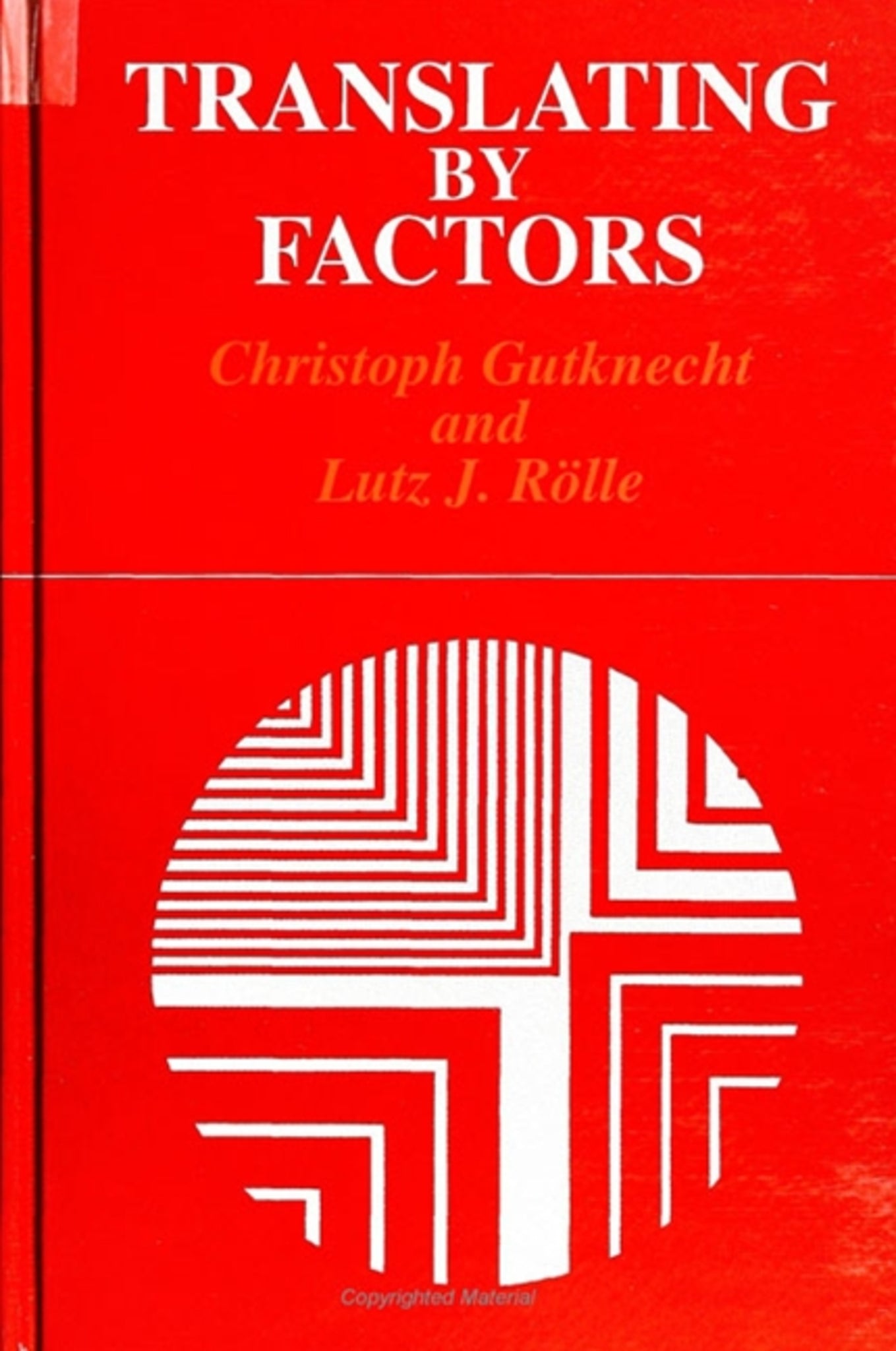We're sorry. An error has occurred
Please cancel or retry.
Translating by Factors

Some error occured while loading the Quick View. Please close the Quick View and try reloading the page.
Couldn't load pickup availability
- Format:
-
03 July 1996

By emphasizing, using English-German examples, the notion of factor set, this book fosters the awareness that successful and adequate translation requires properly accounting for the pertinent translation factors in each individual case. The factor approach gives translation criticism an objective yardstick for assessing the quality of translations. The authors explore the linguistic factors, including treatment of illocution and its indeterminacy, and perlocution, as well as non-linguistic factors such as factuality, situation, and culture. The book also includes aspects more genuinely linked to the notion of translation itself, such as translation units and word class and the nature and status of factors in translation theory.


"The notion of factor is essential to translation studies since all important aspects relating to them can be expressed in terms of it. By systematically exploring all possible kinds of translation factors, the authors make a substantial and remarkable contribution to the evolution of translation studies. There is no study which examines aspects of translation in such imaginative and instructive ways. This book represents a supreme standard of scientific accomplishment." — Christian Todenhagen, California State University, Chico
"I like the authors' willingness and ability to analytically address thorny and subtle problems of translation which are all too often simply avoided as unbreachable—their heavy reliance on naturalistic as opposed to contrived examples." — Joseph L. Malone, Barnard College and Columbia University
Acknowledgments
List of Figures
List of Tables
Key to Symbols
1. Introduction
1.1 Translating by Factors
1.2 The Modals for a Case Study
1.3 Goal of This Study
2. Formal Factors: Syntax and Morphology
2.1 Conjugation and Suffixation
2.2 No Imperative Mood
2.3 Direct Linkage to a Full Verb
2.4 No DO Periphrasis
2.5 No Nonfinite Forms
2.6 Word Order
2.7 Ellipsis
2.8 Word Class
2.9 Selection Restrictions
3. Semantic Factors
3.1 Polysemy
3.2 The Modal System
3.3 Types of Meaning
3.4 Voice
3.5 Tense
3.6 Indirect Speech
4. Pragmatic Factors
4.1 Illocutionary Force
4.2 Perlocution
4.3 Factuality
4.4 Situation
4.5 Permanent Language Varieties
4.6 Culture
5. Factors Relating to Spoken and Written Languages
5.1 Relative Frequency of Forms
5.2 Prosody
5.3 Punctuation
5.4 Syntactic Anticipation
6. Factors Relating to Translation Units and Types of Equivalents
6.1 Zero Equivalence
6.2 Morpheme
6.3 Word
6.4 Phrase
6.5 Clause
6.6 Sentence
6.7 Paragraph
6.8 Whole Text
7. Essential Factors of the Translation Situation
7.1 The SL Speaker
7.2 The SL Text
7.3 The Client
7.4 The Translator
7.5 The TL Hearer
7.6 Translation Direction
8. Factors in Translation Theory
8.1 Sets of Factors
8.2 Relationships between Factors
8.3 Identity of Factors
8.4 Translation Principles
8.5 Equivalence
8.6 Translation or Adaptation?
8.7 Coexistence of Change Factors and Invariance Factors
8.8 Retrospect and Prospect
Notes
References
Author Index
Subject Index



